A N D R E S P Ä Ä B O
w w w . p a a b o . c a
MORE: my visit to Waterhouse
Exhibition in Montreal in 2010
(To return to launch page, click "Return" button at bottom)
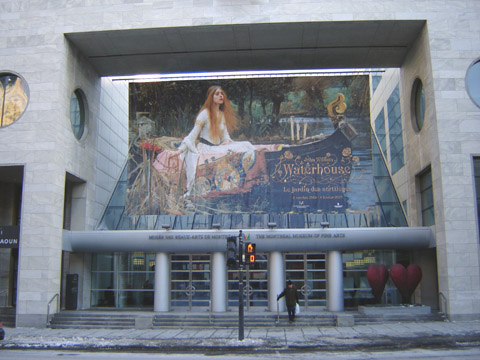
The Waterhouse touring art
exhibition was in Montreal in 2009-10 in
the Musee de Beaux Artes (Museum of Fina Arts) which I visited.
Waterhouse belonged to the tradition of creating large masterpieces to
depict famous scenes in the public consciousness.
in early European history, the most relevant subjects to paint came from the Christian bible. The most notable painting that drew from the bible was Leonardo da Vinci's portayal of the Last Supper.
With the Renaissance and development in interest in ancient Greek culture, including its poems and mythology, the subject matter turned to scenes s from Greek epics lke the Odyssey. In Waterhouse' time, the subject of scenes from the Odyssey was popular, but also the British were interested in the subject of King Arthur and the Knights of the Round table and the narratives that authors and poets had developed around the subject. Waterhouse found his subject matter from both the King Arthur narratives and from the well known themes in the Greek Odyssey. Themes from the bible were no longer of public interest.
This demonstrates how there has always existed a form of are that is very much involved in depicting the real world, and choosing as subject matter, themes that reflect collective consciousness of the time.
Sadly since Waterhouse, public consciousness has departed from themes from ancient Greece or King Arthur, and there has been a lack of traditional realistic art that illustrates what is on the public mind of the day. The large illustrative, romantic, scenes came to an end, thanks in part to the development of photography, which reduced the significance of artist-made depictions of reality. As a result of photography the world of art scrambles to distance itself from photo-realism, and art has become "Anti-realist'. Art now has to depart from reality as we experience it, and become a counterpoint to it. The more wierd, negative, disturbing, abstact, pointless the better. A bank canvas with a dot on it is considered art. All this is the result of the shock humankind experienced with the discovery of photography - the ability to create realstic images without months or years of labouriing with paint on a canvas of wall. It undermined the original nobility and stature of art.
But in the middle of this "anti-realist" development we suddenly saw the realistic works of Robert Bateman and others who followed (including myself) doing what artists have been doing for 10,000 years - since the cave paintings - to portray scenes of relevance to human societies of the time. In tnis case, the naturalist realism paintings of Bateman reflected what is on the public mind - the romantic nature of pristine nature. Unfortunately it has not lasted, I think because photography, including videos, is now so common, that we can now see recreations of the natural world in videos. But if photography had never developed I'm certain there would still be a tradition of creating spectacular paintings of whatever is uppermost on the public mind. Imagine giant scenes of nature adorning giant walls
From that point of view, Waterhouse belonged to the last of the pre-photogaphy art giants
in early European history, the most relevant subjects to paint came from the Christian bible. The most notable painting that drew from the bible was Leonardo da Vinci's portayal of the Last Supper.
With the Renaissance and development in interest in ancient Greek culture, including its poems and mythology, the subject matter turned to scenes s from Greek epics lke the Odyssey. In Waterhouse' time, the subject of scenes from the Odyssey was popular, but also the British were interested in the subject of King Arthur and the Knights of the Round table and the narratives that authors and poets had developed around the subject. Waterhouse found his subject matter from both the King Arthur narratives and from the well known themes in the Greek Odyssey. Themes from the bible were no longer of public interest.
This demonstrates how there has always existed a form of are that is very much involved in depicting the real world, and choosing as subject matter, themes that reflect collective consciousness of the time.
Sadly since Waterhouse, public consciousness has departed from themes from ancient Greece or King Arthur, and there has been a lack of traditional realistic art that illustrates what is on the public mind of the day. The large illustrative, romantic, scenes came to an end, thanks in part to the development of photography, which reduced the significance of artist-made depictions of reality. As a result of photography the world of art scrambles to distance itself from photo-realism, and art has become "Anti-realist'. Art now has to depart from reality as we experience it, and become a counterpoint to it. The more wierd, negative, disturbing, abstact, pointless the better. A bank canvas with a dot on it is considered art. All this is the result of the shock humankind experienced with the discovery of photography - the ability to create realstic images without months or years of labouriing with paint on a canvas of wall. It undermined the original nobility and stature of art.
But in the middle of this "anti-realist" development we suddenly saw the realistic works of Robert Bateman and others who followed (including myself) doing what artists have been doing for 10,000 years - since the cave paintings - to portray scenes of relevance to human societies of the time. In tnis case, the naturalist realism paintings of Bateman reflected what is on the public mind - the romantic nature of pristine nature. Unfortunately it has not lasted, I think because photography, including videos, is now so common, that we can now see recreations of the natural world in videos. But if photography had never developed I'm certain there would still be a tradition of creating spectacular paintings of whatever is uppermost on the public mind. Imagine giant scenes of nature adorning giant walls
From that point of view, Waterhouse belonged to the last of the pre-photogaphy art giants
Some
famous Waterhouse paintings from the internet
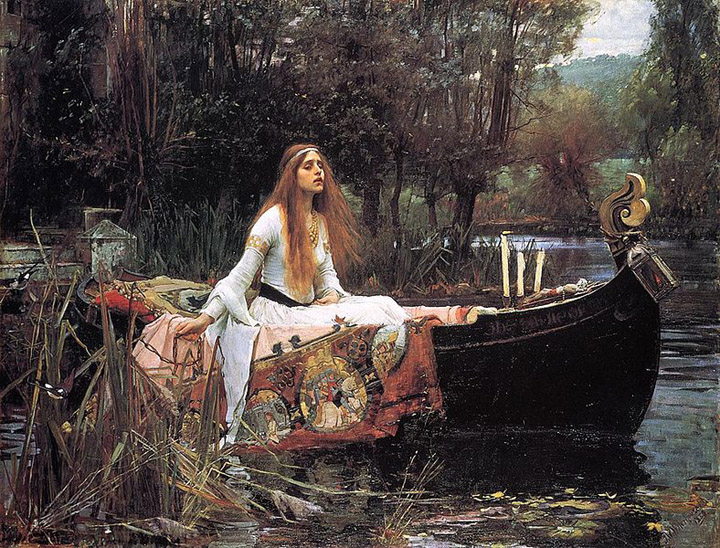
"Lady of Shallot" is Waterhouse' most famous painting. It was about 5ft x 6.5 ft a(153cm x200cm). It depiicts an Arthur-themed scene portrayed in a poem by Tennyson.
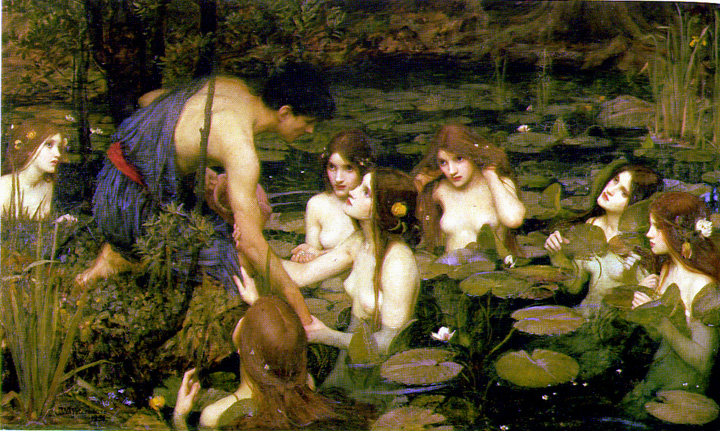
Hylas amd the Nymphs - 1896 is another famous Waterhouse image, depicting a scene from ancient Greek mythology. This one was 38.5 x 64 inches, or 98x 163 cm. Note that the Waterhouse Exhibition in Montreal disallowed photographing the exhibition, and the few images I present here have been taken from the internet.

A Naiad - 1893 This Waterhouse painting depicts Ulysses asleep and being investigated by a water nymph called called a Naiad. The scene is inspired by the ancient Greek epic poem Odyssey.
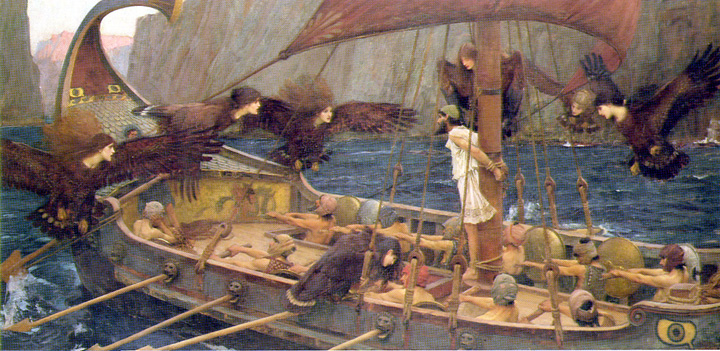
Ulysses and the Sirens - 1891 This is another scene Waterhouse painted from the Greek poem The Odyssey
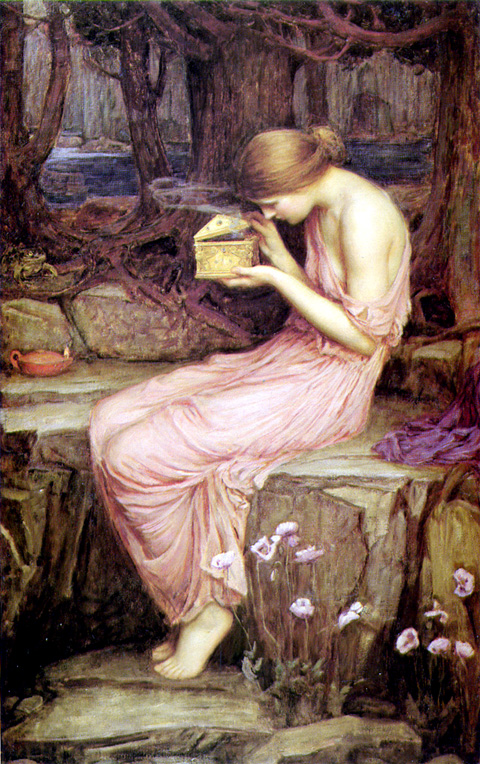
Psyche and the Golden Box - 1903 This Waterhouse painting was 46x29in (117x74cm) It too was inspired by ancient Greek mythology.
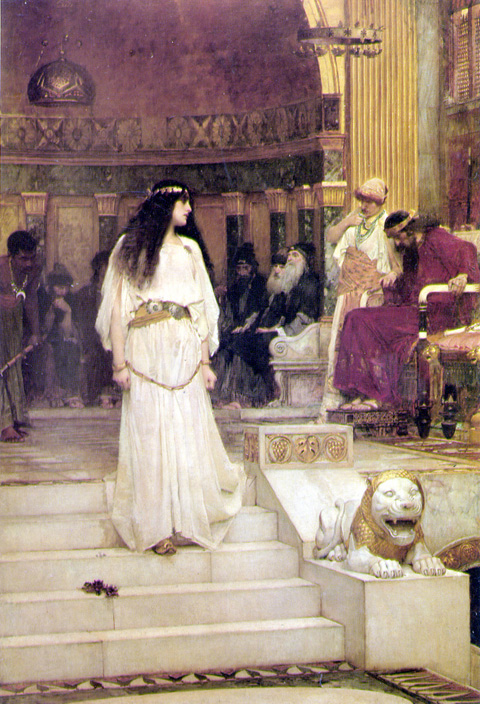
Mariamne leaving the Judgement-1887 Also a tale from Greek Mythology, I believe. The largest painting Waterhouse painted, it is 102x71in (259x180cm)
Comment: Realism of this kind, uses subject matter that reflects scenes that are present in the culture of the time. It is easy to see that if in prehistoric times, the cave culture had been much richer, we might also have seen more realistic paintings of heroic hunters hunting bisons. Today it is possible that illustrative paintings depicting nature scenes could belong to this category of art, reflecting public interesting in the natural environment. Had photography not developed since Waterhouse time, there is no question that the naturalist realism of the 1970's to 1990's would have been the modern version of this natural tradition in art that began with cave paintings of 10,000 years ago.
<<< Return
LAST UPDATE MAR. 2021 (c) A.Paabo